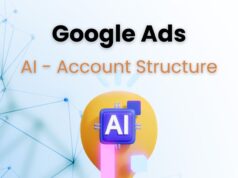In today’s fast-paced digital marketing world, have you ever wondered how you can create more personalized and engaging experiences for your customers? The answer lies in leveraging Google Ads’ Conversational Experience. This cutting-edge feature is transforming the way brands interact with their audiences, enabling more meaningful connections that drive real business results.
Table of Contents
What Is Google Ads Conversational Experience?
Google Ads’ Conversational Experience is a new and innovative way to engage potential customers by allowing them to interact directly with ads. Instead of passively viewing an advertisement, users can now engage in a conversation with the ad itself, providing a richer and more personalized experience. This is not just a traditional click-through ad; it’s an interactive dialogue that can lead to higher engagement rates and better conversion outcomes.
The Evolution of Digital Advertising
To understand the significance of the Conversational Experience, it’s essential to recognize how digital advertising has evolved over the years. Traditional banner ads, which dominated the early internet, have given way to more sophisticated and interactive formats. As users become more discerning and ad-blockers more prevalent, advertisers need to find new ways to capture and retain attention. The Conversational Experience represents the next step in this evolution, offering an immersive, user-centric approach that prioritizes engagement and personalization.
Why Is Conversational Experience Important?
The importance of Conversational Experience in today’s advertising landscape cannot be overstated. With consumers bombarded by thousands of ads daily, the ability to stand out is crucial. Here are some reasons why Conversational Experience is a game-changer:
- Enhanced User Engagement: By offering an interactive experience, brands can capture user attention more effectively, leading to longer engagement times and a deeper connection with the brand.
- Personalization: Conversations can be tailored based on user responses, creating a customized experience that resonates more with individual users.
- Improved Conversion Rates: Engaging users in a conversation increases the likelihood of converting them into customers, as the interaction can guide them through the buyer’s journey more naturally.
- Data Collection: Conversations provide valuable insights into user preferences and behaviors, which can be used to refine future marketing strategies.
How to Implement Google Ads’ Conversational Experience
Implementing the Conversational Experience in your Google Ads campaigns requires a strategic approach. Below, we break down the steps to get started.
1. Set Clear Objectives
Before diving into the implementation, it’s crucial to define what you want to achieve with the Conversational Experience. Are you looking to increase brand awareness, drive sales, or collect leads? Understanding your objectives will help you design the conversation flow and measure success effectively.
2. Design the Conversation Flow
Designing an effective conversation flow is the heart of a successful Conversational Experience. The flow should be intuitive, engaging, and aligned with your objectives. Here’s how to approach it:
- Welcome Message: Start with a friendly greeting that introduces the user to the conversation.
- User Input Options: Offer multiple-choice options or open-ended questions to guide the conversation.
- Personalized Responses: Use dynamic text to personalize responses based on user inputs.
- Call to Action (CTA): Conclude with a clear CTA, such as visiting your website, signing up for a newsletter, or making a purchase.
3. Utilize Google’s Conversational Ad Formats
Google offers various ad formats that support the Conversational Experience, including text ads, display ads, and video ads. Each format provides different opportunities to engage users:
| Ad Format | Description | Best Used For |
|---|---|---|
| Text Ads | Simple and direct, these ads appear in search results and can include conversational elements. | Lead generation, direct sales |
| Display Ads | Visually engaging ads that can include interactive elements like buttons or forms. | Brand awareness, customer engagement |
| Video Ads | Rich media ads that allow for deeper storytelling and interactive conversation within the video format. | Product demonstrations, brand storytelling |
4. Integrate with Other Marketing Channels
The Conversational Experience should not exist in isolation. Integrate it with your other marketing channels, such as email, social media, and content marketing, to create a seamless customer journey. For example, you can use the data collected from conversations to personalize email campaigns or create retargeting ads that address specific user pain points.
5. Test and Optimize
As with any digital marketing initiative, testing and optimization are key to success. A/B testing different conversation flows, messaging, and CTAs will help you identify what works best for your audience. Use Google Ads’ reporting tools to track performance and make data-driven decisions to refine your approach.
Benefits of Using Google Ads’ Conversational Experience
Now that we’ve covered the how-to, let’s explore the tangible benefits that Google Ads’ Conversational Experience can bring to your business.
1. Higher Engagement Rates
Interactive conversations are more likely to capture and retain user attention compared to traditional ads. Users are naturally inclined to engage when they feel they are part of a two-way dialogue rather than being talked at.
2. Better Conversion Rates
The personalized nature of the Conversational Experience allows you to guide users through the buyer’s journey more effectively, addressing their specific needs and objections. This targeted approach results in higher conversion rates.
3. Enhanced Customer Insights
Every conversation provides valuable data on user preferences, pain points, and behavior. This information can be used to refine your marketing strategies, create more targeted campaigns, and improve your overall customer experience.
4. Increased Brand Loyalty
By providing a personalized and engaging experience, you can build stronger relationships with your customers. When users feel valued and understood, they are more likely to become loyal advocates of your brand.
5. Scalability
One of the significant advantages of the Conversational Experience is its scalability. Whether you’re a small business or a large enterprise, you can scale your conversational ads to reach a broader audience without sacrificing personalization.
Real-World Examples of Successful Conversational Ads
To illustrate the potential of the Conversational Experience, let’s look at some real-world examples of brands that have successfully implemented this strategy.
1. Retail Industry: Personalized Shopping Experience
A leading retail brand used Google Ads’ Conversational Experience to create a personalized shopping assistant. Users could interact with the ad to find the perfect product based on their preferences, such as size, color, and budget. This led to a significant increase in user engagement and conversion rates.
2. Automotive Industry: Test Drive Scheduling
An automotive brand implemented a conversational ad that allowed users to schedule a test drive directly within the ad. The conversation guided users through available models, features, and scheduling options, resulting in a higher number of qualified leads.
3. Financial Services: Personalized Investment Advice
A financial services company used conversational ads to offer personalized investment advice. Users could input their financial goals and risk tolerance, and the conversation would recommend suitable investment options. This approach not only increased engagement but also improved customer satisfaction and trust.
Challenges and Considerations
While the benefits of the Conversational Experience are compelling, there are also challenges to consider.
1. Complexity in Design
Designing an effective conversation flow requires a deep understanding of your audience and clear objectives. Poorly designed conversations can lead to user frustration and lower engagement.
2. Privacy Concerns
As with any data-driven marketing strategy, privacy concerns must be addressed. Ensure that your conversational ads comply with all relevant privacy regulations and that users are informed about how their data will be used.
3. Resource Intensive
Implementing and maintaining conversational ads can be resource-intensive, particularly for smaller businesses. However, the investment often pays off in the form of higher engagement and conversion rates.
4. Technical Limitations
While Google Ads provides powerful tools for creating conversational ads, there may be technical limitations depending on your specific use case. It’s essential to test the functionality thoroughly before launching your campaign.
Future of Conversational Experience in Digital Marketing
The Conversational Experience is not just a passing trend; it represents the future of digital marketing. As technology advances, we can expect even more sophisticated and intuitive conversational ads that blur the line between human and machine interactions.
1. AI and Machine Learning Integration
The integration of AI and machine learning will enable even more personalized and dynamic conversations. These technologies can analyze vast amounts of data in real time to deliver hyper-personalized experiences that adapt to user preferences on the fly.
2. Voice-Activated Ads
With the rise of voice assistants like Google Assistant and Amazon Alexa, voice-activated conversational ads are likely to become more prevalent. These ads will allow users to engage in conversations using voice commands, creating a more natural and hands-free experience.
3. Cross-Platform Integration
As the digital ecosystem becomes more interconnected, we can expect greater integration of conversational ads across different platforms and devices. This will create a more seamless and cohesive experience for users, regardless of how they choose to interact with your brand.
Conclusion: Embrace the Future with Google Ads’ Conversational Experience
In a world where consumers are increasingly seeking personalized and interactive experiences, Google Ads’ Conversational Experience offers a powerful tool for brands to connect with their audiences on a deeper level. By implementing this innovative approach, you can enhance user engagement, improve conversion rates, and gain valuable insights that drive long-term business success.
As digital marketing continues to evolve, those who embrace the Conversational Experience will be well-positioned to stay ahead of the curve and create lasting connections with their customers. Now is the time to explore how this cutting-edge feature can transform your advertising strategy and unlock new opportunities for growth.
Key Takeaways:
- Enhanced User Engagement: The Conversational Experience allows users to interact directly with ads, leading to higher engagement and longer interaction times compared to traditional ads.
- Personalization at Scale: This feature enables highly personalized ad experiences that can be tailored to individual user preferences, improving the relevance and effectiveness of the ad content.
- Improved Conversion Rates: By guiding users through a personalized conversation, advertisers can effectively lead potential customers through the buying process, resulting in higher conversion rates.
- Valuable Customer Insights: Each conversation provides insights into user preferences, behaviors, and pain points, allowing brands to refine their marketing strategies and better target their audience.
- Increased Brand Loyalty: Engaging and personalized interactions foster stronger connections with customers, leading to increased brand loyalty and advocacy.
- Scalability for All Business Sizes: The Conversational Experience can be scaled to fit the needs of both small businesses and large enterprises, making it accessible for a wide range of advertisers.
- Cross-Platform Integration: As part of a broader digital marketing strategy, the Conversational Experience can be integrated across multiple channels, providing a seamless user journey.
- Resource and Design Considerations: Implementing a successful Conversational Experience requires thoughtful design and resource investment, particularly in crafting effective conversation flows and ensuring technical functionality.
- Future-Proofing with AI: The future of conversational ads lies in the integration of AI and machine learning, which will enable even more personalized and dynamic interactions that adapt to real-time user behavior.
- Voice-Activated Ads: As voice technology becomes more prevalent, the Conversational Experience will likely expand to include voice-activated ads, offering users a more natural and intuitive way to engage with brands.
FAQs
- What is Google Ads’ Conversational Experience?
- Answer: Google Ads’ Conversational Experience is an interactive ad format that allows users to engage in a two-way dialogue with ads. Instead of just viewing an ad, users can interact with it, leading to a more personalized and engaging experience.
- How does Conversational Experience differ from traditional Google Ads?
- Answer: Unlike traditional ads that are static and one-way, the Conversational Experience allows for real-time interaction between the user and the ad, creating a more dynamic and personalized engagement.
- What types of businesses can benefit from using Conversational Experience?
- Answer: Businesses of all sizes and industries can benefit from the Conversational Experience, especially those looking to enhance user engagement, improve conversion rates, and gather valuable customer insights.
- How can I create a Conversational Experience ad?
- Answer: You can create a Conversational Experience ad by using Google Ads’ tools to design an interactive conversation flow. This involves setting up welcome messages, user input options, personalized responses, and a clear call to action.
- What are the benefits of using Conversational Experience in my advertising strategy?
- Answer: The benefits include higher user engagement, better conversion rates, enhanced customer insights, increased brand loyalty, and the ability to scale personalized experiences across different platforms.
- Can Conversational Experience ads be integrated with other marketing channels?
- Answer: Yes, Conversational Experience ads can be integrated with other marketing channels, such as email, social media, and content marketing, to create a cohesive and seamless customer journey.
- What challenges should I be aware of when implementing Conversational Experience ads?
- Answer: Some challenges include the complexity of designing an effective conversation flow, potential privacy concerns, resource intensity, and technical limitations depending on the use case.
- How can I measure the success of my Conversational Experience ads?
- Answer: Success can be measured using Google Ads’ reporting tools, which track key performance metrics such as engagement rates, conversion rates, and user interaction data. A/B testing can also help optimize performance.
- Are Conversational Experience ads compliant with privacy regulations?
- Answer: Yes, but it’s important to ensure that your ads comply with relevant privacy regulations and that users are informed about how their data will be used during interactions.
- What does the future hold for Conversational Experience in digital marketing?
- Answer: The future of Conversational Experience includes greater integration of AI and machine learning, the rise of voice-activated ads, and more sophisticated cross-platform interactions, making it a key trend in digital marketing.








